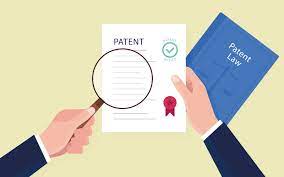A patent gives you authority to restrict others from using your invention without your permission. A patent provides an important source of revenue for your business. A patent is a legal document granted by the government of the state of the country depending on the national rules. It embraces the inventor with an exclusive right to make, use and sell his creation for a specific time period.
What are patentable inventions?
Any product, asset, or invention must follow these basic requirements:
1- It should be new which means there shouldn’t be any existential trace of it.
2-It must be unique in itself. For example, if an individual makes technological improvements in existing products or inventions, they can’t be patented.
3- The invention must not support the immoral purpose or illegal activities, and should add some value to the life of the common man.
What inventions are non-patentable?
The objective of acquiring a patent is to protect the creator’s work to be used by others. According to section 3 and section 5 of the Indian Patents Act 1970, there are some inventions that are not patentable:
-Any method of horticulture or agriculture
– Any invention done under the category of medicine, healer, remedy for humans, plants or animals
-An advancement or discovery in the field of atomic energy.
-Unique machine, device, or process finding
How to get a patent in India?
All dealings, rules, and regulations related to patents in India are dealt with Indian Patents Act 1970. This act suggests that either the inventor, his assignee, or one of his legal representatives can apply for one in the head office of the Indian Patent office or branches.
Steps for application of patent
If you want to file an application for your patent, you can do either it by yourself or can take suggestions from registered agents. Getting a patent through a registered agent is a wise choice. When it comes to the cost of getting a patent, the following two elements came into the picture:
- Form fees, and renewal
- Professional charges of agent
Step 01: Disclose your invention
You can disclose your invention to a registered agent simply by signing a non-disclosure agreement. When it’s about signing a non-disclosure agreement, try to submit each known fact about your invention.
Step 02: Search for patentability
A professional charges INR 10,000 to 20,00 to carry on extensive research of all databases to find whether your idea is patentable. After research, the agent builds a patentability search report based on your invention.
Step 03: Decide to file an application for patent
Once patentability research is done, you can now take a step ahead in filing patent applications. While drafting a patent, again remember that your invention must have an inventive step in comparison to any existing piece of invention.
Step 04: Draft patent
To draft your application, you have to pay from INR 20, 000 to INR 30,000. For dispute-free processes, you can take the help of professionals.
Step 05: File the patent application
After drafting your patent application, just review everything once, you can file patent application with the appropriate forms. The applicable fees vary from INR 1,600 to INR 8,000 depending upon the type of application while submitting the patent application.
Step 06: Request for examination
After filing a patent application, you need to request the Indian patent office within 48 hours. The fees to request a patent examination range from INR 4, 000 to INR 20,000 depending upon the type of application.
Step 07: Respond to objections (if any)
Patent officers examine the draft and report submitted and requested by you for examination. At this stage of the procedure, there are chances officers may communicate with the inventor to know inventive steps for assessment. If officers find everything clear, the patent is given a green signal to come to action.
Step 08: Grant of patent
If the application fulfills all requirements, it is placed forward for the grant. Also, the final approval of the patent is published in the journal.
Step 09: Renewal of your patent
Your patent needs to be renewed after every 20 years by paying a small fee.
What are the benefits of getting a patent?
- Prevents your invention from being stolen.
- Since your idea has become a brand, you have a larger market share.
- Increased monetary worth and profit margins
- The right to exclusivity
- It’s simple to create and market a product.
However, filing a patent is a very lengthy and complicated process, it is important to recognize its significance. With technological developments, the process is likely to become simpler and easier.


